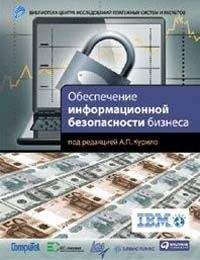Майкл Мобуссин - Больше, чем вы знаете. Необычный взгляд на мир финансов
12. 20020221_boglespeech_com_gen_JS.htm.
13. Alice Lowenstein, “The Low Turnover Advantage”, Morningstar Research, September 7, 1997, http://www.morningstar.com/news/
14. ms/FundFocus/lowturnover1.html.
15. Russ Wermers, “Mutual Fund Performance: An Empirical Decomposition into Stock-Picking Talent, Style, Transaction Costs, and Expenses”, Journal of Finance 55 (August 2000): 1655–1703.
16. Yahoo предлагает классификацию рисков (выше среднего, средний и ниже среднего) на основе стандартного отклонения доходности портфеля. Я выразил эти уровни в количественной форме, обозначив их следующим образом: 1 – фонды с профилем риска ниже среднего, 2 – фонды со средним профилем риска и 3 – фонды с профилем риска выше среднего, чтобы рассчитать средний уровень риска для каждого диапазона оборачиваемости портфеля. Цифры взвешены по активам.
Глава 11. Все, что мне было нужно знать, я узнал на домашней презентации Tupperware
1. Robert B. Cialdini, “The Science of Persuasion”, Scientific American (February 2001): 76–81.
2. Robert B. Cialdini, Influence: Psychology of Persuasion (New York: William Morrow, 1993), 18[15].
3. См. главу 11.
4. Интересный отчет об эксперименте Эша см. в книге Duncan J. Watts, Six Degrees: The Science of a Connected Age (New York: W. W. Norton and Company, 2003), 207–10.
5. Cialdini, Influence, 208–15. См. также Rod Dickson, “The Milgram Reenactment”, http://www.milgramreenactment.org/pages/section.xml?location=51.
6. Lisa W. Foderato, “If June Cleaver Joined ‘Sex and the City’: Tupperware Parties for the Cosmo Set”, The New York Times, February 1, 2003.
7. Cialdini, Influence, 37.
Глава 12. Все системы работают
1. Antonio R. Damasio, Descartes’ Error: Emotion, Reason, and the Human Brain (New York: Avon Books, 1994), xi-xii.
2. Thomas A. Stewart, “How to Think With Your Gut?”, Business 2.0, November 2002.
3. Antonio R. Damasio, The Feeling of What Happens: Body and Emotion in the Making of Consciousness (New York: Harcourt Brace & Company, 1999), 301–3. Antoine Bechara, Hanna Damasio, Daniel Tranel, and Antonio R. Damasio, “Deciding Advantageously Before Knowing the Advantageous Strategy”, Science 275 (February 28, 1997): 1293–95.
4. Лекция лауреата Нобелевской премии Даниэля Канемана “Maps of Bounded Rationality: A Perspective on Intuitive Judgment and Choice”, прочитана 8 декабря 2002 г. http://www.nobel.se/economics/laureates/
5. 2002/kahnemann-lecture.pdf.
6. Paul Slovic, Melissa Finucane, Ellen Peters, and Donald G. MacGregor, “The Affect Heuristic”, in Heuristics and Biases: The Psychology of Intuitive Judgment, ed. Thomas Gilovich, Dale Griffin, and Daniel Kahneman (Cambridge: Cambridge University Press, 2002), 397–420.
7. Slovic, Finucane, Peters, and MacGregor, “The Affect Heuristic”.
8. Donald G. MacGregor, “Imagery and Financial Judgment”, The Journal of Psychology and Financial Markets 3, no. 1 (2002):15–22.
Глава 13. Любовь у гуппи
1. Точнее, выбор зависит от того, насколько сильно самцы отличаются по окрасу. Когда различие небольшое, самки выбирают менее оранжевого, подражая другим. Но если окрас самцов отличается довольно сильно, самки игнорируют выбор других самок и предпочитают более яркого. См.: Lee Alan Dugatkin and Jean-Guy J. Godin, “How Females Choose Their Mates”, Scientific American, April 1998, 56–61.
2. Lee Alan Dugatkin, The Imitation Factor (New York: Free Press, 2000).
3. См.: Charles Anderson and John J. Bartholdi III, “Centralized Versus Decentralized Control in Manufacturing: Lessons from Social Insects”, in Complexity and Complex Systems in Industry, ed. Ian P. McCarthy and Thierry Rakotobe-Joel (Warwick: University of Warwick, 2000), 92–95: http://www2.isye.gatech.edu/˜carl/papers/cc.pdf.
4. Обсуждение темы ограничений арбитража см.: Andrei Schleifer, Inefficient Markets; An Introduction to Behavioral Finance (Oxford: Oxford University Press, 2000).
5. Инвесторы также должны понимать, что обратная реакция работает на разных уровнях. Она может запускаться на уровне отдельного инструмента, на уровне компании или на уровне всего рынка. Иногда эти разные уровни обратной реакции коррелируют, иногда нет.
6. Suchil Bikchndani and Sunil Sharma, “Herd Behavior in Financial Markets”, IMF Staff Paper 47, no. 3 (2001), http://www.imf.org/External/Pubs/FT/
7. staffp/2001/01/pdf/bikchan.pdf.
8. Suchil Bikchndani, David Hirschleifer, and Ivo Welch, “Informational Cascades and Rational Herding: An Annotated Bibliography”, Working Paper: UCLA/Anderson and Michigan/GCB (June 1996).
9. Duncan J. Watts, “A Simple Model of Global Cascades on Random Networks”, Proceedings of the National Academy of Sciences 99, no. 9 (April 30, 2002): 5766–71.
10. Anderson and Bartholdi, “Centralized Versus Decentralized Control”.
11. Charles MacKay, Extraordinary Popular Delusions and the Madness of Crowds (1841; New York: Three Rivers Press, 1995)[16].
12. Russ Wermers, “Mutual Fund Herding and the Impact on Stock Prices”, Journal of Finance 54, no. 2 (April 1999): 581–622.
13. Ivo Welch, “Herding Among Security Analysts”, Journal of Financial Economics 58, no. 3 (December 2000): 369–96.
14. Victor M. Eguiluz and Martin G. Zimmermann, “Transmission of Information and Herd Behavior: An Application to Financial Markets”, Physical Review Letters 85, no. 26 (December 25, 2000): 5659–62.
15. J. Bradford DeLong, Andrei Schleifer, Lawrence M. Summers, and Robert J. Waldmann, “Positive Feedback Investment Strategies and Destabilizing Rational Speculation”, Journal of Finance 45, no. 2 (June 1990): 379–95.
Глава 14. Будьте осторожны с поведенческими финансами
1. Большинство специалистов согласны с тем, что отправной точкой в истории поведенческих финансов можно считать статью Вернера ДеБондта и Ричарда Талера «Не слишком ли сильна реакция рынка?». См.: Werner DeBondt and Richard Thaler, “Does the Stock Market Overreact?”, Journal of Finance 40 (1985): 793–805.
2. См.: Alfred Rappaport and Michael J. Maboussin, “Pitfalls to Avoid”, www.expectationinvesting.com/pdf/pitfalls.pdf.
3. Hersh Shefrin, Beyond Greed and Fear: Understanding Behavioral Finance and the Psychology of Investing (Boston: Harvard Business School Press, 2000), 5.
4. Vernon L. Smith, “An Experimental Study of Competitive Market Behavior”, Journal of Political Economy 70, no. 3 (June 1962): 111–37.
5. Andrei Schleifer, Inefficient Markets: An Introduction in Behavioral Finance (Oxford: Oxford University Press, 2000), 3. Через несколько страниц Шлейфер высказывается смелее: «Теории Канемана и Тверски не оставляют от этого аргумента камня на камне».
6. Sherry Sontag and Christopher Drew, Blind Man’s Bluff: The Untold Story of America Submarine Espionage (New York: Perseus Books, 1998), 58–59.
7. Jack L. Treynor, “Market Efficiency and the Bean Jar Experiment”, Financial Analysts Journal (May-June 1987): 50–53.
8. Это не относится к руководителям компаний. В их случае индивидуальные ошибки при принятии решений могут оказывать существенное отрицательное влияние на акционерную стоимость. Хороший тому пример – проклятие победителя, когда компания, выигравшая на аукционе (победитель), как правило, переплачивает за приобретенный актив (проклятие).
9. См. главу 11.
Глава 15. Призываем на помощь лорда Кейнса
1. W. Brian Arthur, “Inductive Reasoning and Bounded Rationality: The El Farol Problem”. Этот доклад был прочитан на ежегодном съезде Американской экономической ассоциации в 1994 г. и опубликован в журнале American Economic Review 84 (1984): 406–11, http://www.santafe.edu/arthur/Papers/El_Farol.html.
2. Основательное обсуждение темы формирования ожиданий см.: Karl-Erik Warneryd, Stock-Market Psychology (Cheltenham, UK: Edward Elgar, 2001), 73–95.
3. См.: Bob Davis and Susan Warren, “How Fears of Impending War Already Take Economic Toll”, The Wall Street Journal, January 29, 2003.
4. John Maynard Keynes, The General Theory of Employment (New York: Harcourt, Brace and company, 1936), 162[17].
5. Там же, 159.
6. John C. Bogle, “Mutual Fund Industry in 2003: Back to the Future”, из выступления в Гарвардском клубе в Бостоне 14 января 2003 г., http://www.vanguard.com/bogle_site/sp20030114.html.
7. Этот раздел широко опирается на работу Брайана Артура «Индуктивное рассуждение».
8. Corinne Coen and Rick Riolo, “El Farol Revisited: How People in Large Groups Learn to Coordinate Through Complementary Scripts”, материалы 4-й международной конференции Organizational Learning and Knowledge Management, июнь 2001 г.
9. Max Bazerman, Judgment in Managerial Decision Making, 4th ed. (New York: Wiley, 1998), 36–39.
10. Hersh Shefrin, Beyond Greed and Fear: Understanding Behavioral Finance and the Psychology of Investing (Boston: Harvard Business School Press, 2000), 199.
Глава 16. Внутреннее чутье
1. Thomas A. Stewart, “How to Think With Your Gut”, Business 2.0, November 1, 2002, http://money.cnn.com/magazines/business2/
2. business2_archive/2002/11/01/331634/index.htm.
3. Там же.
4. Peter L. Bernstein, Against the Gods: The Remarkable Story of Risk (New York: John Wiley & Sons, 1996), 99–100[18].
5. Raanan Lipshitz, Gary Klein, Judith Orasanu, and Eduardo Salas, “Taking Stock of Naturalistic Decision Making”, Working Paper, July 15, 2000, http://organizations.haifa.ac.il/html/html_eng/raanan-taking.doc.
6. Robert A. Olsen, “Professional Investors as Naturalistic Decision Makers: Evidence and Market Implications”, The Journal of Psychology and Financial Markets 3, no. 3 (2002): 161–67.
7. Там же, 162–163.
8. Michael T. Kaufman, Soros: The Life and Times of a Messianic Billionaire (New York: Knopf, 2002), 141.
9. Gary Klein, Sources of Power: How People Make Decisions (Cambridge, Mass.: MIT Press, 1998), 161–66.
10. Stewart, “How to Think With Your Gut”.
11. Более подробно о подсознании см.: Frank Tallis, Hidden Minds: A History of the Unconscious (New York: Arcade Publishing, 2002), 95–109.
Глава 17. Наблюдайте и анализируйте
1. http://www.brainyquote.com/quotes/authors/a/antoine_lavoisier.html.
2. http://www.phrases.org.uk/meanings/375700.html.
3. http://www.usdoj.gov/atr/cases/exhibits/20.pdf.
4. Dale Griffin and Amos Tversky, “The Weighing of Evidence and the Determinants of Confidence”, in Heuristics and Biases: The Psychology of Intuitive Judgment, ed. Thomas Gilovich, Dale Griffin, and Daniel Kahneman (Cambridge: Cambridge University Press, 2002), 230–49.
5. Richard Thaler, The Winner’s Curse: Paradoxes and Anomalies of Economic Life (Princeton, N. J.: Princeton University Press, 1994).
6. Продажа в 2003 г. компанией Sears подразделения кредитных карт наглядно иллюстрирует эту мысль. Некоторые инвесторы открыли короткие позиции по акциям компании, считая, что цена продажи бизнеса будет ниже прогноза руководства, и многие потенциальные покупатели актива подтверждали это мнение. Однако покупатель в конечном итоге заплатил больше, чем составляла стоимость бизнеса по средним оценкам.
7. Вот очень хороший пример. В 2000 г. ныне бывший аналитик CSFB проработал два дня в качестве временного сотрудника в центре обработки заказов компании Amazon.com. По самым щедрым оценкам, он выполнил заказов на сумму не более $15 000 за квартал, тогда как выручка компании от продаж за квартал составила $1 млрд. Однако эти два дня послужили основой для отчета об исследовании и множества статей в прессе.
8. Tarun Chorida, Richard Roll, and Avanidhar Subrahmanyam, “Evidence of the Speed of Convergence to Market Efficiency”. Working Paper, April 29, 2002. См. также: Eugene F. Fama, Lawrence Fisher, Michael C. Jensen, and Richard Roll, “The Adjustment of Stock Prices to New Information”, International Economic Review 10, no. 1 (February 1969): 1–21.



